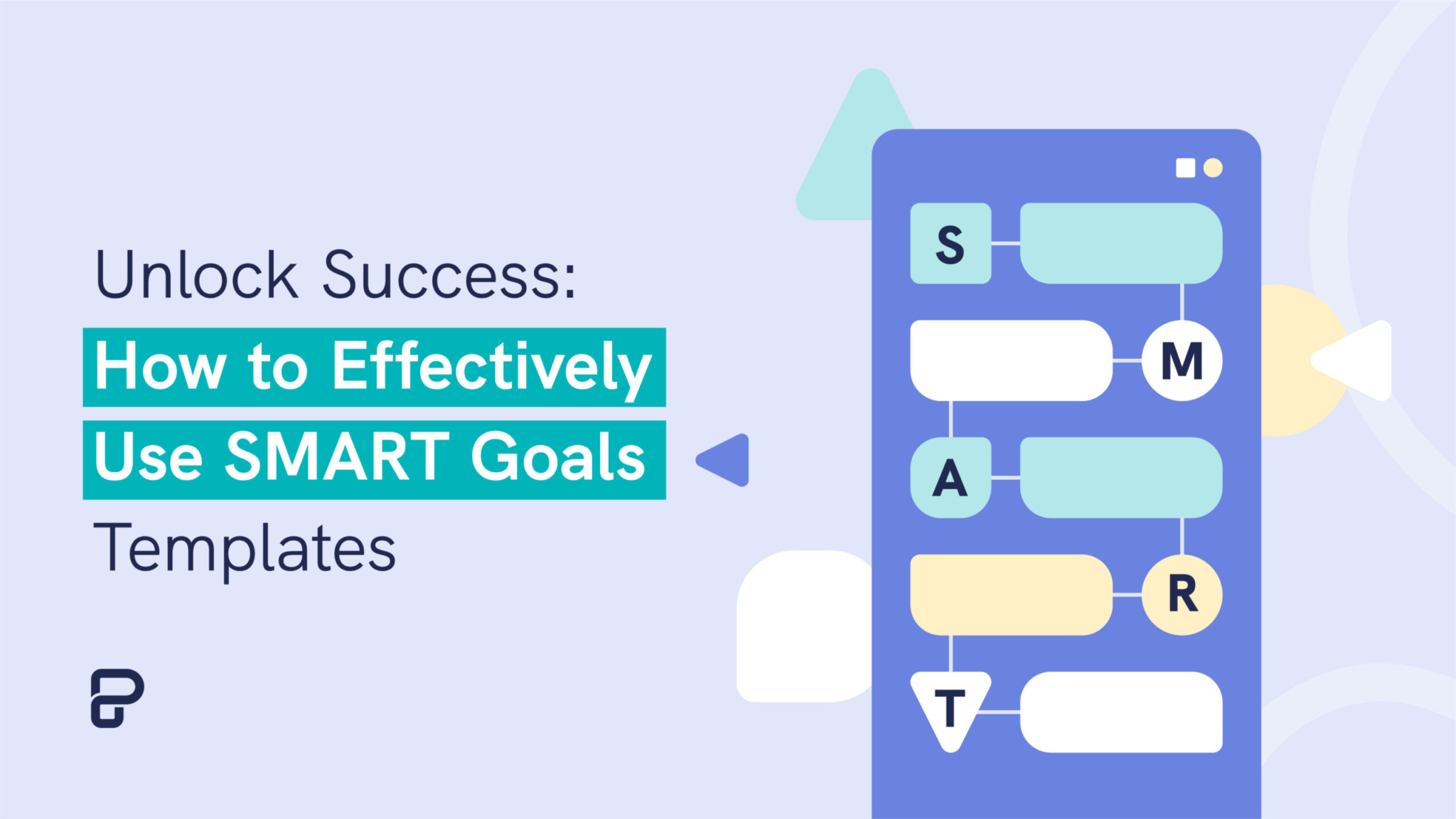In today’s fast-paced business landscape, it’s not uncommon for seasoned professionals or founders of their own business, to feel the shadow of competitors looming closer.
Enter the Competitor Mapping Template: a tool designed not just to chart where your rivals stand, but to help you visualize and solidify your position at the forefront of your industry.
As we say at Piktochart, “Be obsessed with your customers, but monitor your competitors carefully.” Give our tool a try, and let us know what you think about it!
Table of Contents
What is competitor analysis?
Competitor analysis is a strategic method of evaluating the strengths and weaknesses of current and potential competitors within the competitive landscape.
This analysis provides a framework to identify opportunities and threats, and it can be a foundational step in the formulation of effective competitive advantage and strategic planning.
How to perform competitive analysis?
Here’s a breakdown of what a market landscape entails:
1. Identification of Competitors
The first step is to identify who your key competitors are. This can be direct competitors (those offering a similar product or service in the same target market) or indirect competitors (those offering a substitute or alternative).
Although a company may have multiple competitors in the same market, it is important not to track 20 competitors at the same time (you won’t be able to). The general rule of thumb is no more than 5 direct competitors.
2. Analysis of Competitor Products and Services
The basic competitive research involves understanding what products and services main competitors offer, key features, their quality, price points, and any unique selling propositions.
- Visit their pricing pages and track them over time. This informs their pricing strategy and pricing models.
- Go to G2Crowd, Capterra, Trustpilot to find customer feedback (if software related).
- You will be able to gage unique selling propositions and value proposition from the mouths of the users themselves.
- What’s also interesting is to profile their audience demographics. Are they similar to yours?
3. Market and Share Analysis
This helps to understand the market positioning of the competitor. It can provide insights into market share, growth rates, industry trends and target demographics. Key metrics may not always be available, especially for a private company. Therefore:
- For their digital footprint, go to Similarweb.com to find the estimated web traffic.
- Use a SEO tool such as Ahrefs, Semrush to figure out the organic traffic that these competitors are getting. These tools occasionally have “share of voice” of organic traffic as well. The SEO analysis can help inform simple actions to improve organic traffic.
4. Strengths and Weaknesses
Identify what your competitors do well and where they might be lacking. This can range from technological advantages to marketing strategies or customer service.
- This is qualitative data – your observations from the above data points.
- You can also perform a SWOT analysis (strengths, weaknesses, opportunities and threats) to uncover competitors strengths.
Read more on How to Structure and Visualize A SWOT Analysis. Or, get started on your SWOT analysis with our templates by registering for free!
5. Strategic Intent
Trying to deduce the future strategies of a competitor can help a business to be proactive instead of reactive. For instance, are competitors investing in R&D or looking to enter new markets?
- For private companies, following their social media accounts and Vacancies pages may help you identify such plans in the future.
- For public companies, their quarterly financial statements will usually contain plenty of information. Purchasing market research papers can also help to understand the business growth.
6. Operational and Financial Analysis
This involves analyzing the financial health and operational efficiency of competitors. Financial statements, annual reports, and industry reports can be useful here.
- For private companies, company’s revenue may not be possible, but the management team may give out interviews where you would be able to dig some estimates/information. Otherwise, looking at how many employees they have can sometimes be an indication of the size of the company.
7. Marketing and Branding Strategies
Understanding how competitors market themselves can give insights into their target audience, branding strategies, promotional methods, and more. Marketing teams can make use of this information to further differentiate from competitors products.
- Qualitative analysis based on #5 above. Ask questions such as:
- What is the brand messaging?
- Who are their target buyers and in which target markets? Are they in your same market?
- Are they engaging in paid ads?
- What are their distribution channels?
- How many followers do they have on social media? Is social media an important channel?
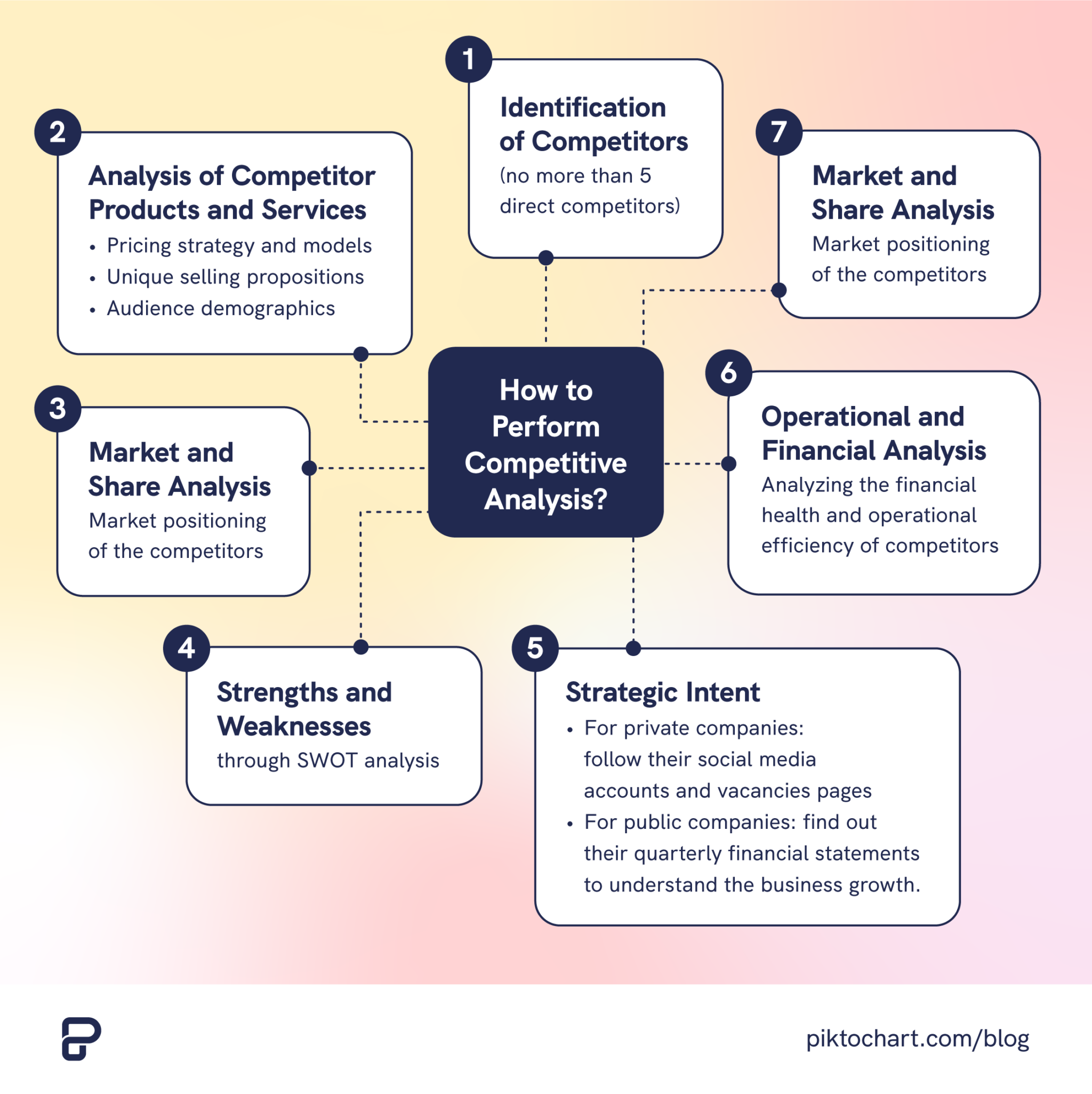
Competitor analysis is not just a one-time task; it’s an ongoing process.
At Piktochart, we recommend creating a spreadsheet to capture details.
Once you have put everything together, you would be able to put together a competitor analysis report.
Competitive analysis templates to visualize the results


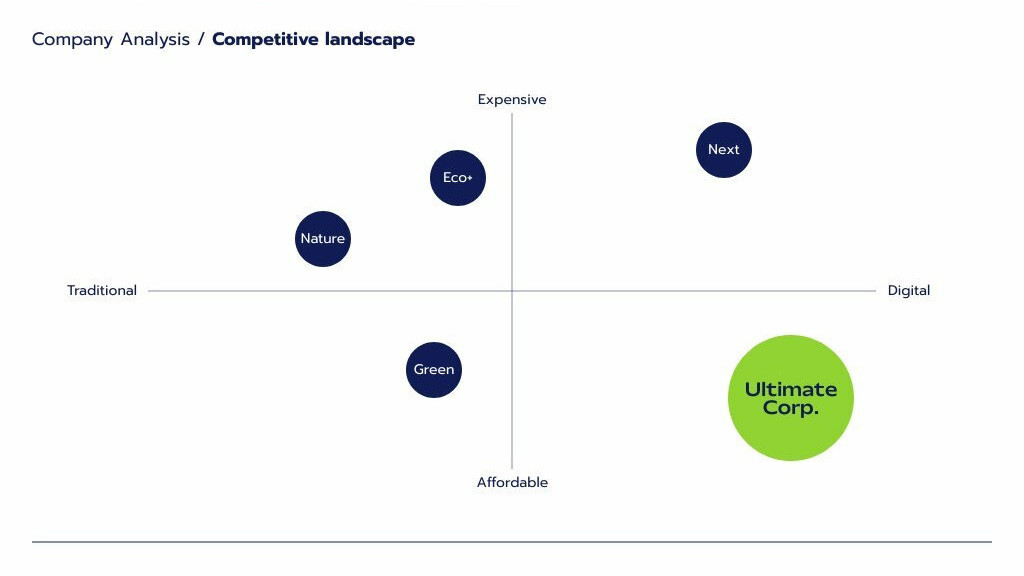
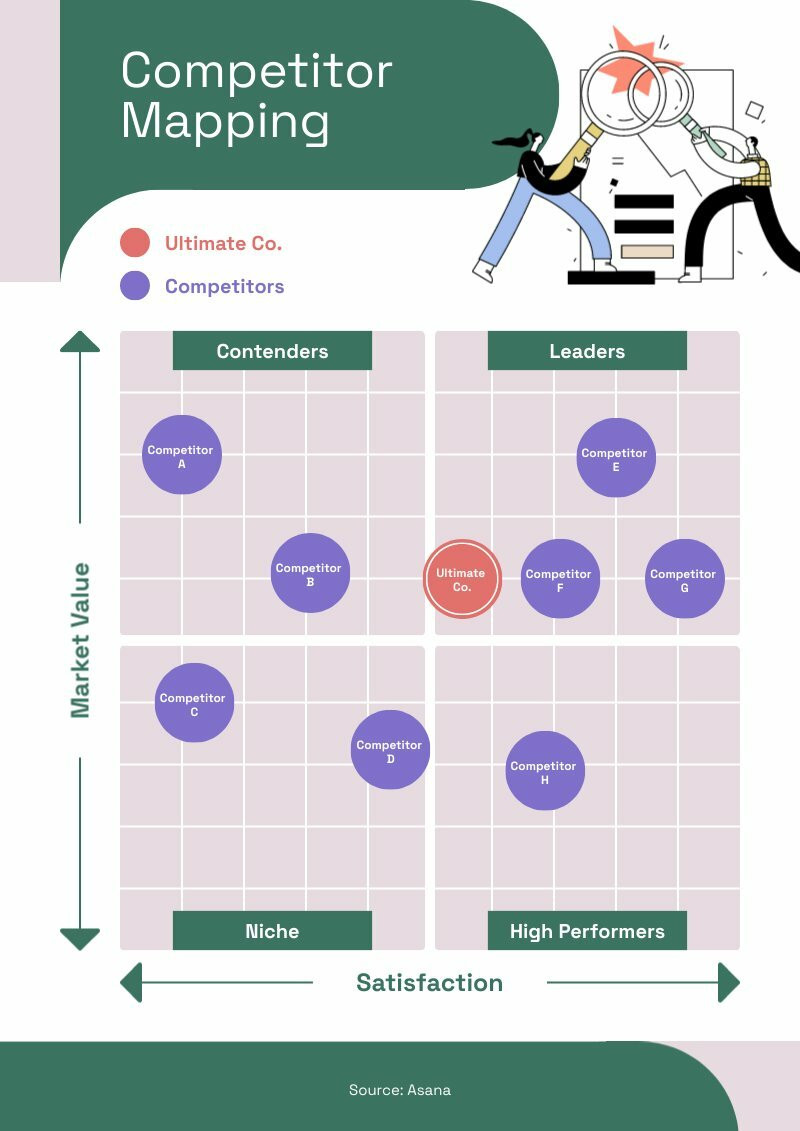

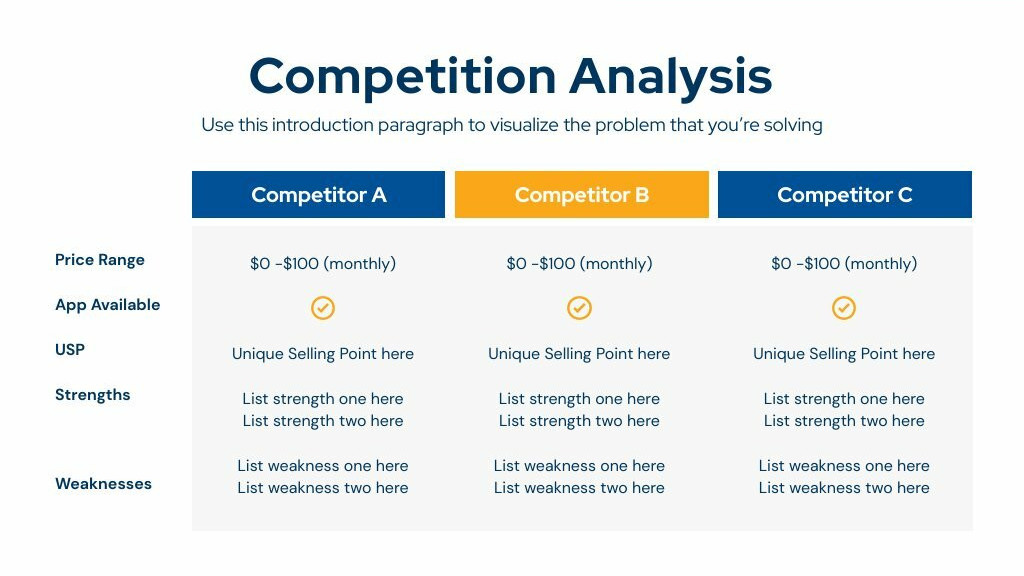
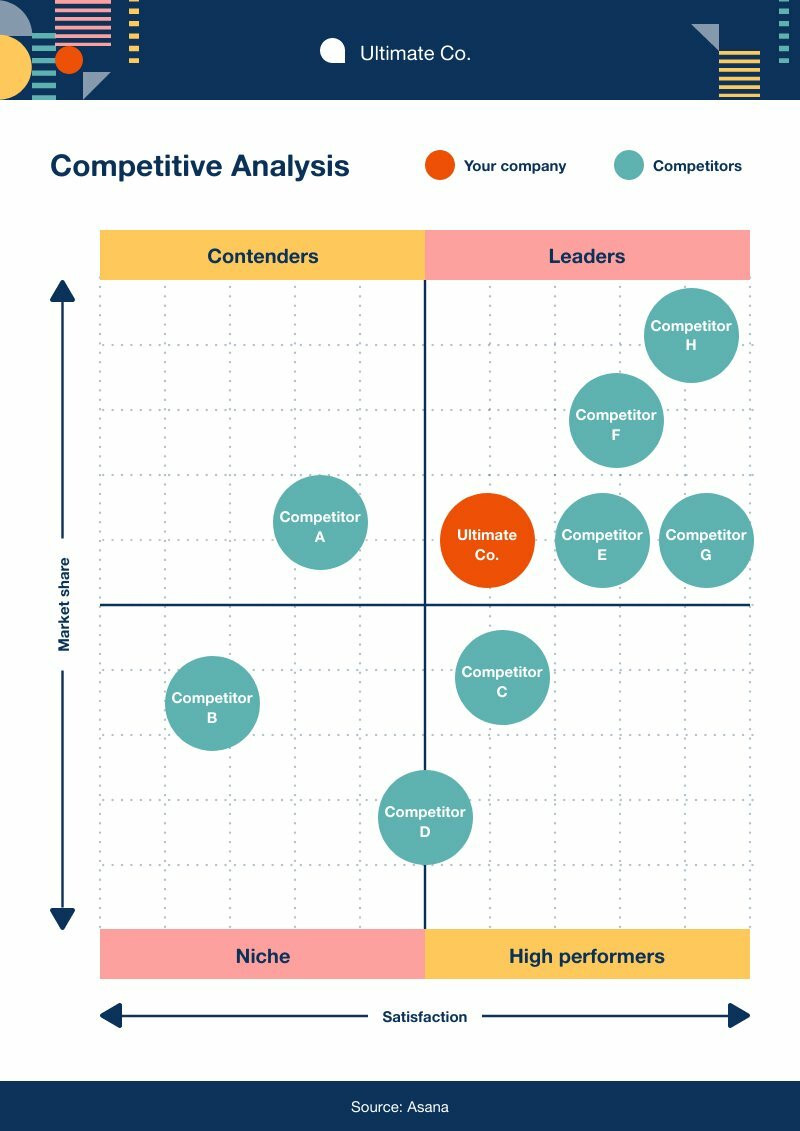
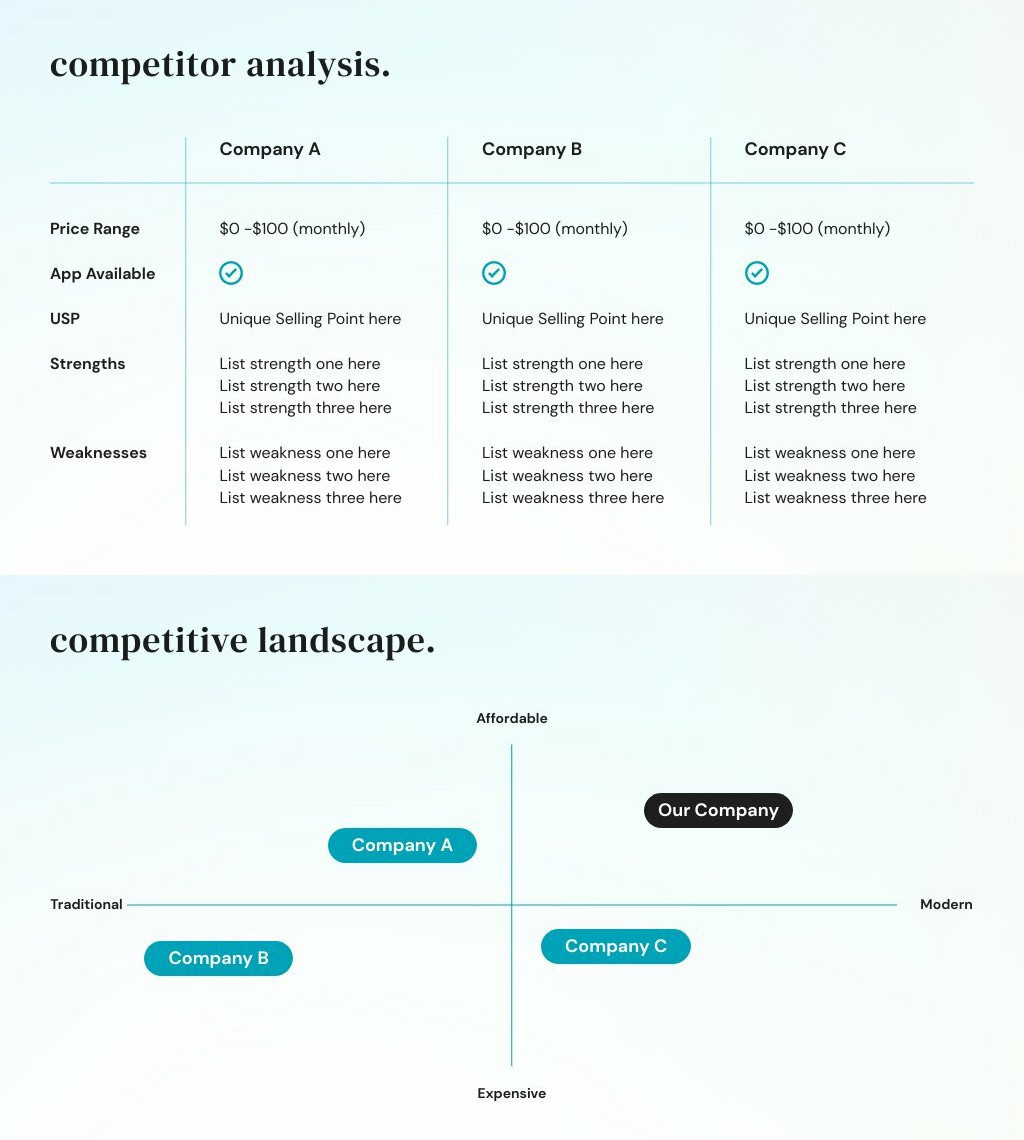
Conclusion
In the complex world of business strategy, understanding your competitors isn’t just advantageous; it’s imperative to gain valuable insights to guide the marketing strategy and the sales team.
By equipping oneself with competitive analysis, we ensure not just survival, but also strategic leadership in a fluctuating market. As you navigate the ever-evolving business landscape, remember: staying informed is the linchpin of success.
Be obsessed with your customers, but monitor your competitors carefully.
Piktochart offers professionally-designed templates for all your visual communication needs. It is your one-stop shop for presentations, posters, logos, email signatures, infographics and more. Get started for free today.
Streamline your strategy now
Unlock your competitive edge with our comprehensive Competitor Mapping templates.
Sign up for Piktochart now



